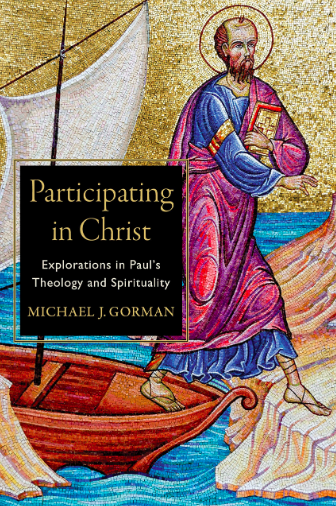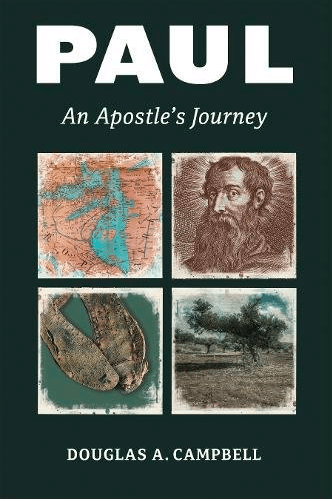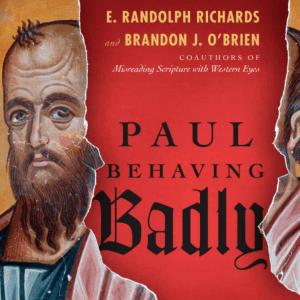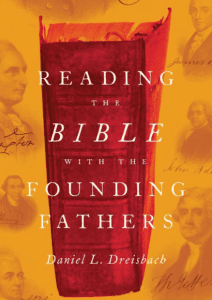 The apostle Paul was a first century Jew. This should not be a controversial statement.
The apostle Paul was a first century Jew. This should not be a controversial statement.
Paul was a first century Jew educated in the Hebrew Scriptures.
Paul used the Scriptures in the manner common to his day, age, and culture.
Paul was transformed by his experience of the crucified and risen Lord.
After this experience everything Paul read in the Hebrew Scriptures was transformed by and read through the lens of his definitive, life-changing experience with God. The Scriptures point to Christ.
Here then is the key point of the sixth chapter of the new book by Peter Enns, The Evolution of Adam: What the Bible Does and Doesn’t Say about Human Origins.
Paul’s use of the Old Testament is also driven by his conviction that now, in the risen Messiah, God has spoken the final word in his plan to save humanity. This final word in Christ is understood by Paul as the necessary concluding chapter to Israel’s story. Conversely, the gospel is also the lens through which Israel’s story is now to be read in a fresh way. (p. 103-104)
Paul read, used, and interpreted the Hebrew Scriptures in ways common to his day, age, and culture – but he now saw, through the grace of God, that Jesus Christ, God’s Messiah, was the focal point of the entire story.
This needs to be unpacked and elaborated – and I will sketch some of the points Enns makes below.
How did Paul read the Scripture? What was his driving goal?
What do we mean (or should we mean) when we say Paul was inspired by God?
In Chapter 6 Paul as Ancient Interpreter of the Old Testament Enns looks at four different aspects of the insight we can gain as we consider Paul as a first century Jew using the Hebrew Scriptures.
First, Paul was a first century man. As such he had a view common to his culture on issues like cosmology, biology, and geography. There is no reason to think that God corrected these notions as Paul was inspired to reflect upon and write about the gospel of Jesus Christ that had transformed his life and transformed the world. Paul shared assumptions with his contemporaries that we know are inaccurate. This is entirely compatible with inspiration in the context of a personal God who meets us where we are.
If we begin with assumptions about what inspiration “must mean,” we are creating a false dilemma and will wind up needing to make tortuous arguments to line up Paul and other Biblical writers with modes of thinking that would never have occurred to them. But when we allow the Bible to lead us in our thinking on inspiration, we are compelled to leave room for the ancient writers to reflect and even incorporate their ancient, mistaken, cosmologies into their scriptural reflections. (p. 94-95)
Second, The kind of exegesis we expect today was not the norm of the first century. The period between the return from Babylonian exile and the life of Jesus and time of Paul was a time of significant and prolific reflection on the Hebrew Scriptures. Much was written reflecting on the story of Israel and on how to make sense of God’s promises in the light of contemporary circumstances. We see this in the pseudepigrapha, the apocrypha, and the early Christian writings. .
For the sake of the discussion of Adam it is helpful to consider the context that surrounded and helped shape the way Paul approached the Genesis narrative. Enns outlines several different approaches to the garden story active around the time of Jesus and Paul.
In the Wisdom of Solomon (Apocrypha, late 1st century BC to early first century AD) Adam is referred to as one who was “delivered from his transgression” and death entered the world “through the devil’s envy.”
Ecclesiasticus (Apocrypha, 2nd century BC) puts the blame for sin and death on Eve (a theme Paul uses in 1 Tim. 2:14). But elsewhere responsibility is placed on each individual.
Jubilees (Pseudepigrapha, 2nd century BC) turns Adam into “a priestly figure who actually offers sacrifices for his own transgression.” (p. 100)
Philo (ca. 20 BC to 50 AD) saw in Adam a decline that was instigated by his wife. “When she was introduced into Adam’s life, the desire for pleasure meant exchanging imortality for mortality.” (P. 101)
Second Esdras (or 4 Ezra) and Second Baruch also reflect on Adam and his sin in attempt to make sense of the fall of Jerusalem and destruction of the temple in 70 AD.
Third, Paul used the Hebrew Scriptures according to the conventions of his day and age. The works above are not part of our canon of scripture (well for protestants anyway, the Apocrypha is part of the canon recognized by the Roman Catholic and Eastern Orthodox churches). What matters for us is not so much what others thought, but Paul and how he saw Christ as the fulfillment of the story of Israel. But Paul and the other New Testament writers engaged with the Hebrew Scriptures in a manner consistent with their surrounding culture. The post a couple of weeks ago, Out of Egypt? … Say What? looked at this a bit.
In this chapter Enns looks at five specific examples in the writings of Paul that illustrate Paul’s use of the Hebrew Scriptures. I will give a brief glance at three of these here.
Paul reads everything through Christ. Paul quotes Isaiah 49:8 in 2 Cor. 6:2. But Paul’s reading and use of Isaiah’s words is not bound by the original intent of the prophet or the context of the original audience. Paul transforms the words of Isaiah to speak into a new situation.
Paul sees what Isaiah did not, that all of God’s saving activity through history is ultimately embodied somehow in the death and resurrection of Christ. Paul expresses that conviction by fostering a deep theological connection between the two events of deliverance from Babylon and resurrection of Christ. …
Paul’s theological conviction drives his interpretation of Isaiah 49:8 and recasts that passage to explain the significance of Christ’s coming. (p. 105)
Paul can use scripture creatively to make a point. In Galatians 3:15-29 Paul uses a play on words to make a theological point. He intentionally twists around the singular and plural nature of the collective noun “seed”. The promise to Abraham was that he would be the father of a great nation.
The promises were spoken to Abraham and to his seed. Scripture does not say “and to seeds,” meaning many people, but “and to your seed,” meaning one person, who is Christ. (Gal 3:16 NIV)
But Gen. 13:16 has God telling Abraham And I will make thy seed as the dust of the earth: so that if a man can number the dust of the earth, then shall thy seed also be numbered. (KJV) Clearly the intent of “seed” here is plural.
The entire point of the promise is that the offspring will be many, not one. Paul, however, exploits the singular form of seed to argue that the promise to Abraham was for one son, not many, and that that son was Christ. Paul’s theological point is not surprising given the Christ-centered theology throughout his writing – in Jesus, Israel’s story finds its completion, its end point. (p. 106)
And Paul moves back to the plural form of seed when he returns in verse 29 to the subject of the church.
Paul can alter scripture to make his point. Romans 11:26-27 has Paul quoting Isaiah 59:20.
and in this way all Israel will be saved. As it is written: “The deliverer will come from Zion; he will turn godlessness away from Jacob. And this ismy covenant with them when I take away their sins.”
But both the Septuagint and the Hebrew clearly state that the redeemer will come to Zion in Isaiah 59:20-21:
“The Redeemer will come to Zion, to those in Jacob who repent of their sins,” declares the LORD. “As for me, this is my covenant with them,” says the LORD.
“My Spirit, who is on you, will not depart from you, and my words that I have put in your mouth will always be on your lips, on the lips of your children and on the lips of their descendants—from this time on and forever,” says the LORD
Some have suggested that Paul had access to some version that we no longer have – but in this is pure speculation, and introduces theological problems of its own. The suggestion is made to protect Paul from error – but does this mean that the text we have is errant – or that Paul had and quotes an errant text? It requires fewer contortions to entertain the notion that Paul used the text according to the conventions of his day. Enns notes:
Paul’s creative citation of Isaiah, however, has ample precedent in the ancient world, where texts were mined and adjusted to allow alternate meanings of the text to emerge. What Paul does here would not have raised an eyebrow in his day. (p. 110)
A consideration of why Paul cited the text in this creative fashion should inform our understanding of Paul’s intent in the passage.
Fourth, Paul knew an interpreted Bible. Paul’s understanding of the Scripture was accompanied by an interpretive tradition that included details not contained in the text. These details, common knowledge in his day, come out at times in the way Paul uses and refers to Scripture in the New Testament letters. The reference to Jannes and Jambres in 2 Tim. 3:8 is one example of an interpretive tradition that makes its way into the text as a common knowledge reference. The reference to angels in Gal. 3:19 and the “moving rock” of 1 Cor. 10:4 are other such examples.
Enns sums up the chapter:
What makes Paul so interesting, and sometimes so difficult to read, is that his use of the Old Testament is informed both by the ancient conventions we are looking at here and his conviction that the crucified and risen Jesus requires Israel’s story to be reinterpreted. Rather than a modern academic giving a neutral interpretation of the Old Testament, when we read Paul we must learn to expect from him an interpretive challenge. Our task as modern Christian readers is to understand Paul’s ways. (p. 116)
We follow Paul’s example – in our own fashion. As I was thinking about this chapter of Pete’s book, and about the way Paul used the scripture to make solid Christ-centered points it occurred to me that we do similar things in our own way. And it is good. When a preacher, grounded in the Gospel of Jesus Christ, uses a passage of scripture in a way that is not necessarily consistent with the original intent of the author, God’s Word is still preached. Sometimes we bring God’s message alive for people today through a riff on the Word rather than a scholarly exposition. At other times we make it alive by placing the text firmly in its first century context. There is a place for both. As long as God is the rock on which we stand and Christ is at the center of our teaching we cannot go far wrong.
Here is seems best to finish with the admonition to Timothy.
But as for you, continue in what you have learned and have become convinced of, because you know those from whom you learned it, and how from infancy you have known the Holy Scriptures, which are able to make you wise for salvation through faith in Christ Jesus. All Scripture is God-breathed and is useful for teaching, rebuking, correcting and training in righteousness, so that the servant of God may be thoroughly equipped for every good work. (2 Tim 3:14-17)
Scripture is from God and serves his purposes. We find God and Christ in scripture. But the dry text-book approach taken by many misses the point, and isn’t consistent with the way Paul or the other New Testament authors read, interacted with, and used the Hebrew Scriptures.
What do you think?
Is the only proper use of Scripture the original intent of the author? Does this both define and limit the truth contained?
Is a preacher today wrong when he or she uses a passage of scripture in a fashion unintended by the original author?
Does the way Paul used the Hebrew Scriptures challenge your thinking about the nature of Scripture and the use of Scripture?
If you wish to contact me directly, you may do so at rjs4mail[at]att.net
If interested you can subscribe to a full text feed of my posts at Musings on Science and Theology.











